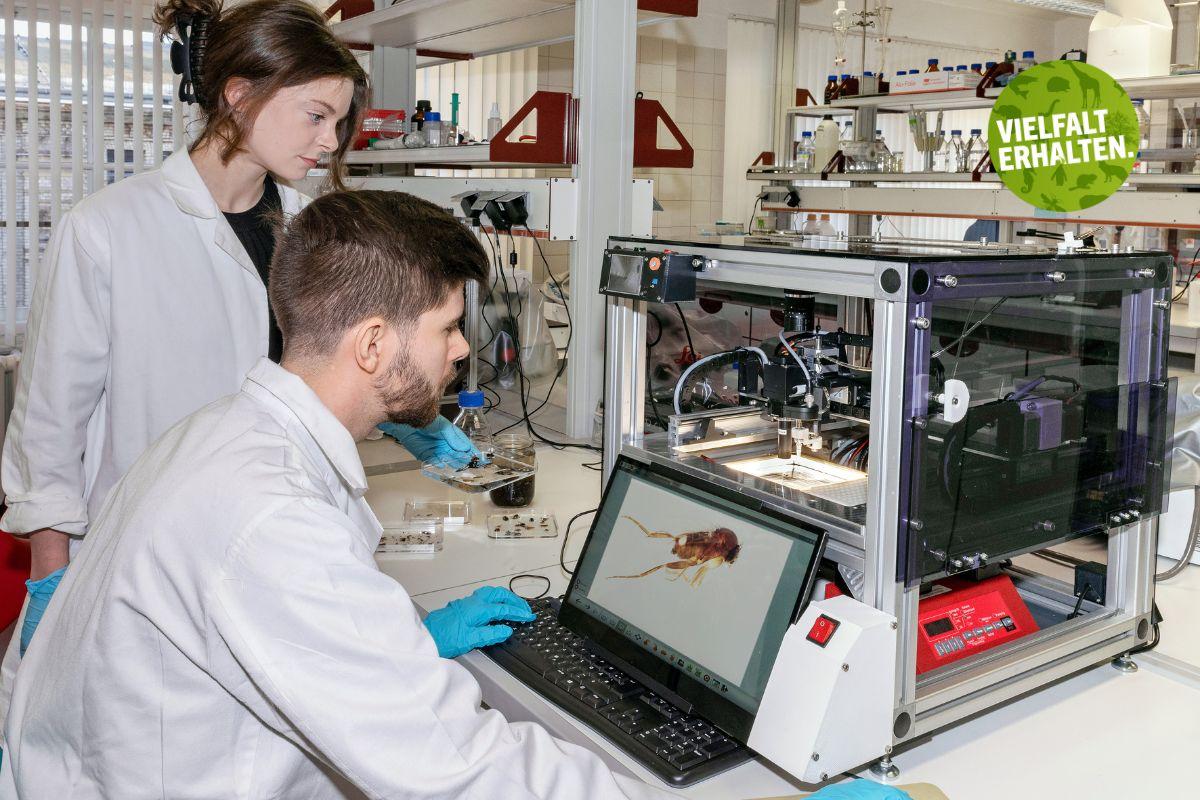We are running out of time. As you read this text, animal and plant species that are still unknown and have never been scientifically described become extinct because we are contaminating the environment, affecting the climate and destroying the habitats of fellow inhabitants of this earth. What a treasure of life we, the so-called wise man, Homo sapiens, are irretrievably destroying! This affects in particular the group of animals with the most species, the insects. In tropical countries, where the diversity is greatest, most of the information is missing. The species discovery factory of the Museum für Naturkunde can and will change that.
Identifying small animals is often difficult and it takes years to become an expert on one group of animals. But now there is a revolutionary technical solution for learning about this diversity of life. Until now, it was technically impossible for machines to become experts. But this is exactly what has been achieved and has been practiced at the Museum für Naturkunde Berlin for a few months now.
The Center for Integrative Biodiversity Discovery led by Prof. Dr. Rudolf Meier is developing and using the DiversityScanner. The DiversityScanner developed at the Karlsruher Institut für Technologie KIT and use now in a cooperation project with Prof. Rudolf Meier. It can even analyze complex samples. For example, in monitoring and research projects, insect samples are often obtained that consist of thousands of different animals and are then preserved in alcohol for storage. These samples can now simply be filled into the scanner – technically brilliant.
Two cameras analyze the sample and photograph each animal. Software compares the optical characteristics of the individual animals, recognizes typical patterns and arranges the photos of the animals into groups. This grouping corresponds to the zoological taxa, i.e. the systematic classification of the animals.
The machine then sorts the animals individually and fully automatically into small sample chambers. This creates standardized sample containers, which each contain 96 insects. The genetic material of these animals can be extracted and compared with known DNA sequences from databases. In this way, it is possible to determine exactly which animals are involved – and to reveal the secrets that lie dormant in their genetic material.
Through constant optimization, the researchers have been able to reduce the costs for such determinations to a few cents per sample. This also applies to the consumption of materials. When working with DNA, sterile disposable materials often used to prevent contamination of a sample. Their use has also been reduced to a minimum in order to work as resource-efficiently as possible.
In this way, several thousand animals can now be sorted into species within one week. The discovery of biological diversity is in full swing – the species discovery factory at the Museum für Naturkunde Berlin makes it possible.
This text is part of the campaign "Safeguarding nature!" for the World Nature Summit 2022 in Montreal.
Text: Mathias Zilch, Dr. Gesine Steiner
Picture: Hwa Ja Götz
